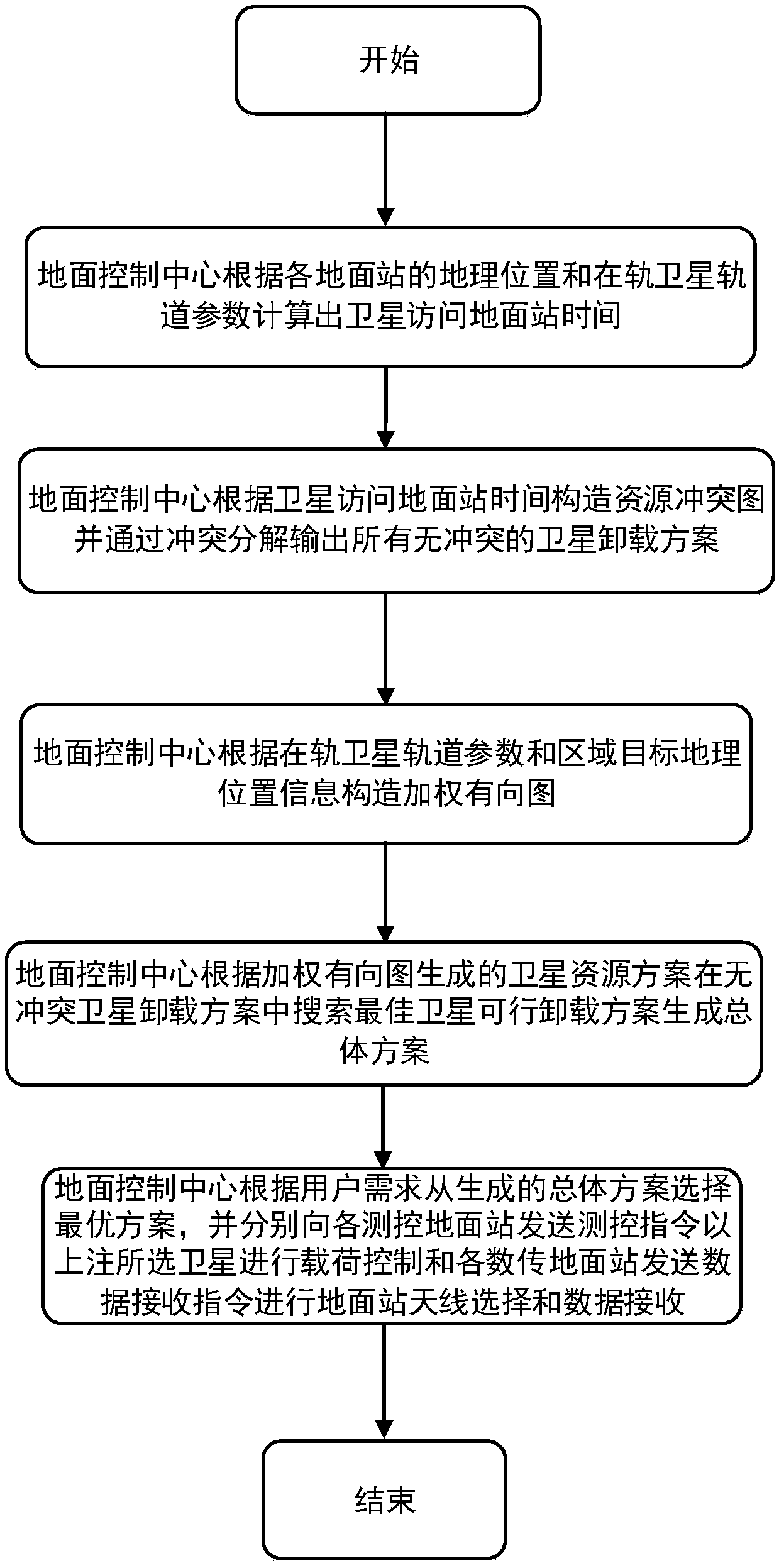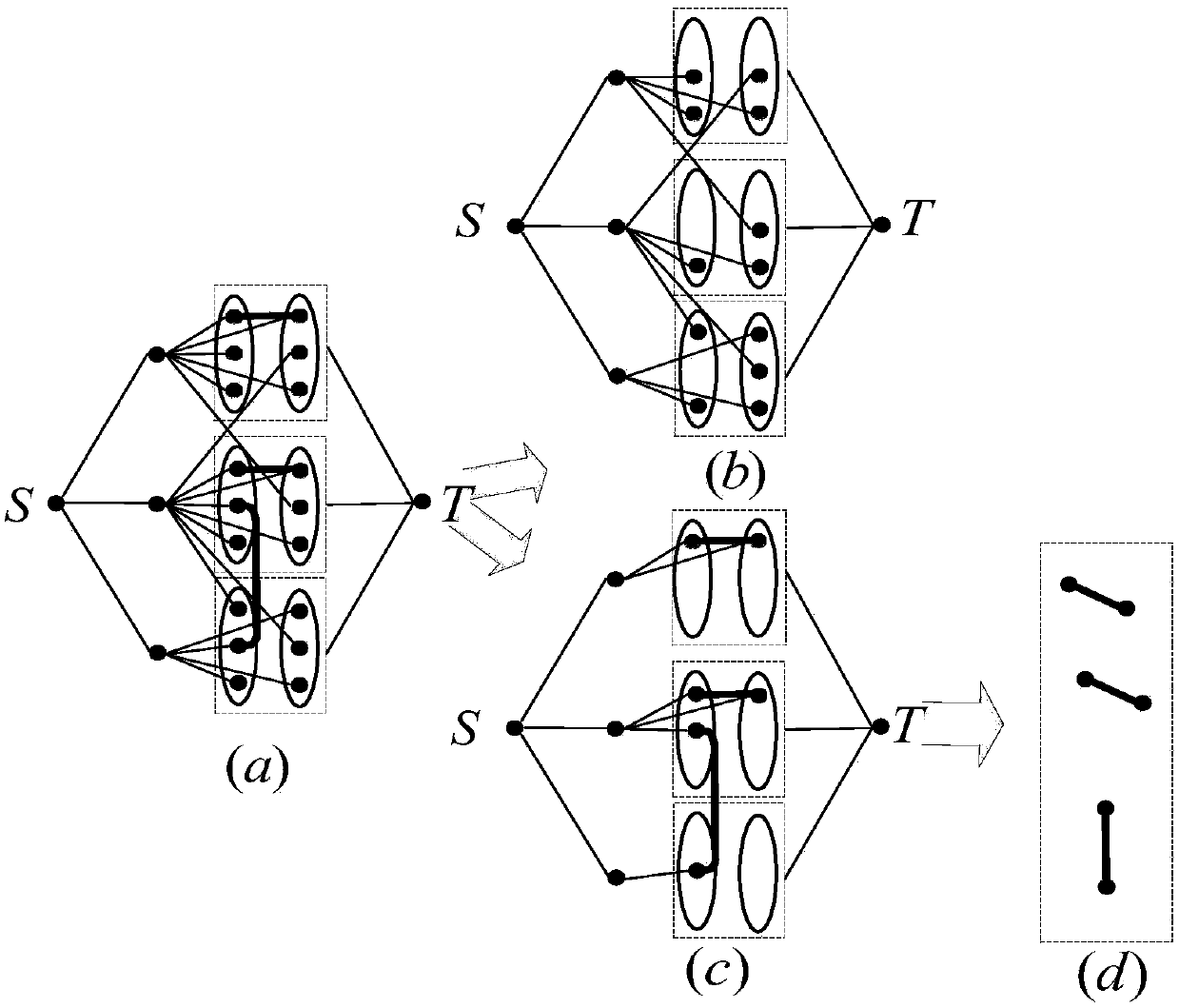Multi-satellite and multi-ground station resource collaborative allocation management method oriented to region target
A technology of regional goals and management methods, applied in the directions of radio transmission systems, electrical components, transmission systems, etc., can solve the problems of inability to apply regional goals and affect the efficient use of earth observation satellite system resources, to simplify the complexity, maximize the shortest Time response mechanism, the effect of improving resource utilization
- Summary
- Abstract
- Description
- Claims
- Application Information
AI Technical Summary
Problems solved by technology
Method used
Image
Examples
Embodiment 1
[0029] This example sets out from the earth observation satellite system to illustrate the implementation process of the present invention. refer to figure 1 , the earth observation satellite system used in the present invention includes a ground control center, an earth observation satellite and a ground station part. It is assumed that the earth observation satellite system consists of I satellites distributed in sun-synchronous orbits. Each earth observation satellite is equipped with H sensors with different resolutions. The roll angle range of each sensor is [-30°, 30°]. Assuming that the number of ground stations is M, and the stations are deployed locally, each ground station is equipped with n transceiver devices. The geographic location of the target area is randomly generated globally.
[0030] In previous studies, most of the research work on resource management of the earth observation satellite system only considered the earth observation or data offloading st...
Embodiment 2
[0042] The regional target-oriented multi-star multi-ground station resource collaborative allocation management method is the same as embodiment 1, and the construction resource relationship diagram described in step (2) specifically includes:
[0043] (2a) Construct resource relationship graph G 1 The point set V(G 1 )={S}∪{T}∪N∪S at , where S is the virtual source node, T is the virtual destination node, is the set of ground station virtual points, S at is a collection of satellite nodes, It is the opportunity for the j-th satellite to visit the n-th set of transceiver equipment of the m-th ground station for the i-th time.
[0044] (2b) Construct resource relationship graph G 1 The edge set E(G 1 ), namely E(G 1 )=SS∪SG∪NT∪CV, where SS is the virtual source node S to satellite node S i ∈ S at The edge set of , SG is the construction satellite node S i ∈ S at The edge set to the virtual point set N of the ground station, NT is the virtual node for constructing ...
Embodiment 3
[0046] The regional target-oriented multi-star multi-ground station resource cooperative allocation management method is the same as embodiment 1-2, and the ground control center described in step (3) builds a communication resource conflict-free graph and a communication resource conflict graph, specifically including:
[0047] (3a) Resource relationship graph G of accessing ground stations from satellites 1 Delete the conflicting edge and the points connected to the conflicting edge to get the communication resource conflict-free graph G 2 (V(G 2 ),E(G 2 )). Access to ground station resource diagram G from satellite 1 Deletion of communication resources in conflict-free graph G 2 The set of all nodes and edges except the satellite node, virtual source node and destination node in , can get the resource graph G with conflict relationship 3 =G 3 (V(G 3 ),E(G 3 )).
[0048] (3b) will have a resource graph G with conflicting relations 3 Middle side E(G 3 )\CV is expre...
PUM
 Login to View More
Login to View More Abstract
Description
Claims
Application Information
 Login to View More
Login to View More - R&D
- Intellectual Property
- Life Sciences
- Materials
- Tech Scout
- Unparalleled Data Quality
- Higher Quality Content
- 60% Fewer Hallucinations
Browse by: Latest US Patents, China's latest patents, Technical Efficacy Thesaurus, Application Domain, Technology Topic, Popular Technical Reports.
© 2025 PatSnap. All rights reserved.Legal|Privacy policy|Modern Slavery Act Transparency Statement|Sitemap|About US| Contact US: help@patsnap.com



